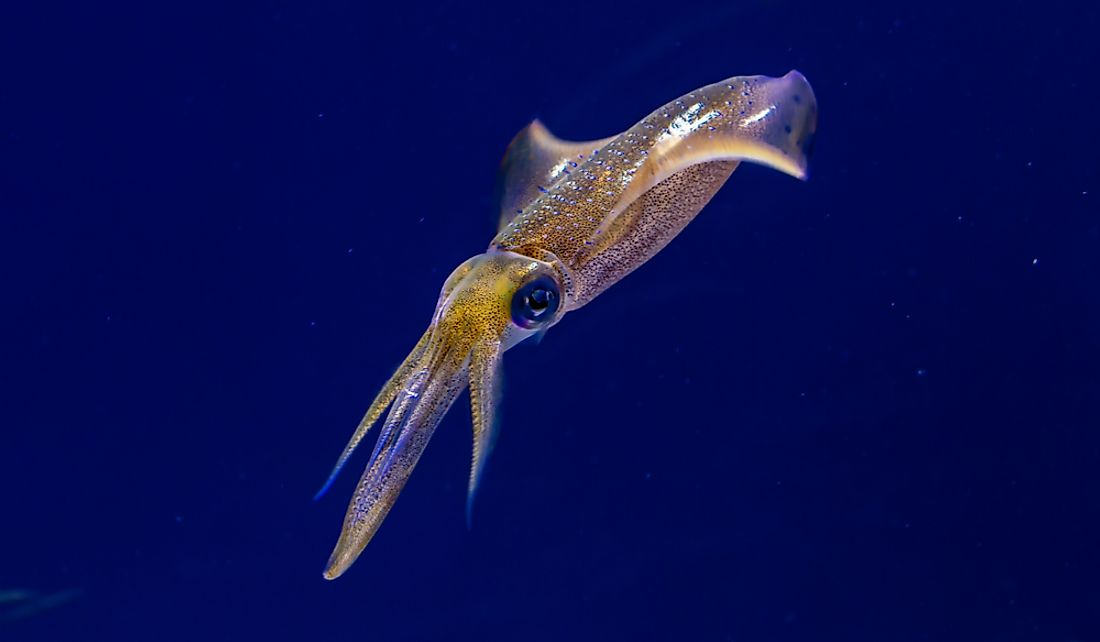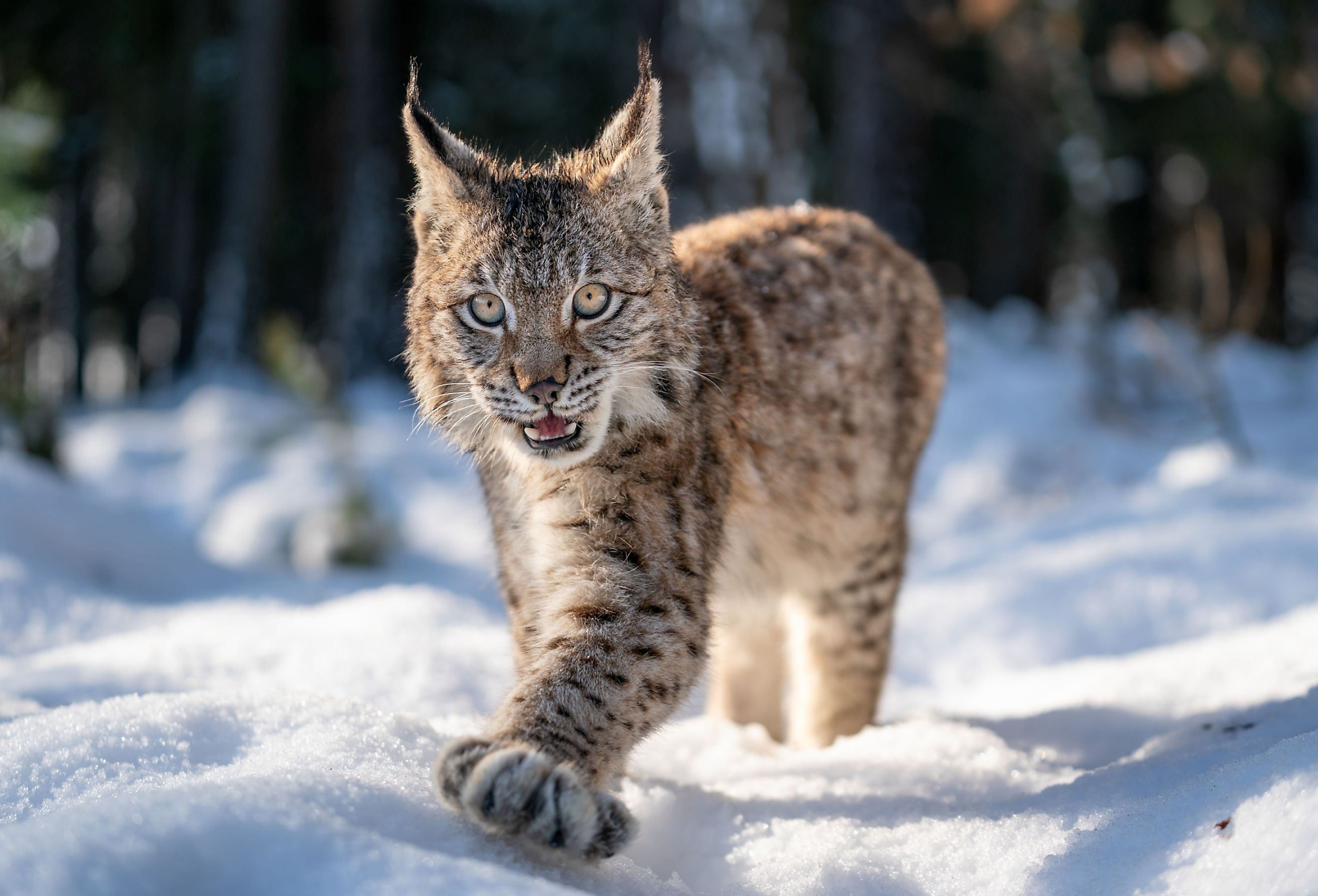
The 12 Deadliest Animals in Connecticut
In the United States, 1.3 million treat-and-release Emergency Department visits yearly result from animal-related injuries, and a further 60,000 people per year are admitted for hospital stays. The truth, however, is that many animal-related injuries can be avoided with a little bit of knowledge, caution, and preparedness. Connecticut may not always feel like the wild green yonder; however, with many large forested areas adjacent to its residential towns and vast rural regions, it is not rare for a Nutmegger to cross paths with a plethora of wild creatures. Follow along as we discuss Connecticut's 12 most dangerous animals and learn what makes them harmful and how to prevent a potentially tragic encounter.
1. Ticks (various genera)
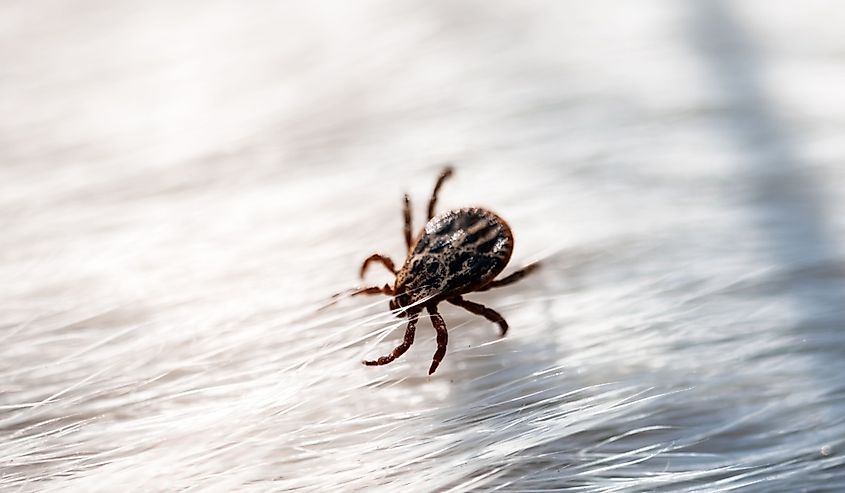
Ticks are tiny arachnids—not insects as you might have thought—that can be found throughout Connecticut. They prefer forests and areas with long grass fields, where they can hide and wait for passing mammals to cling to for a meal. These tiny vampires use an internal anesthetic to hide their potentially deadly bite from their unknowing victims. While a tick bite itself is usually innocuous, deer ticks, in particular, are known to spread potentially deadly diseases. While you might be aware of Lyme disease, deer ticks are also known to spread anaplasmosis, babesiosis, and Powassan virus. According to the CDC data, CT reports up to 4,600 new cases of Lyme disease each year.
To best prevent tick-borne illness, experts advise wearing appropriate clothing if you expect to be in areas where ticks thrive this summer. Long pants, sleeves, and boots can all help keep ticks off of your skin. Bug repellent can also assist in minimizing encounters, and when you are in high-risk areas, make sure you check yourself regularly. Remember, deer ticks can be very small and difficult to see, so when inspecting yourself or others, look very carefully and be very thorough.
2. Mosquitoes (various genera)
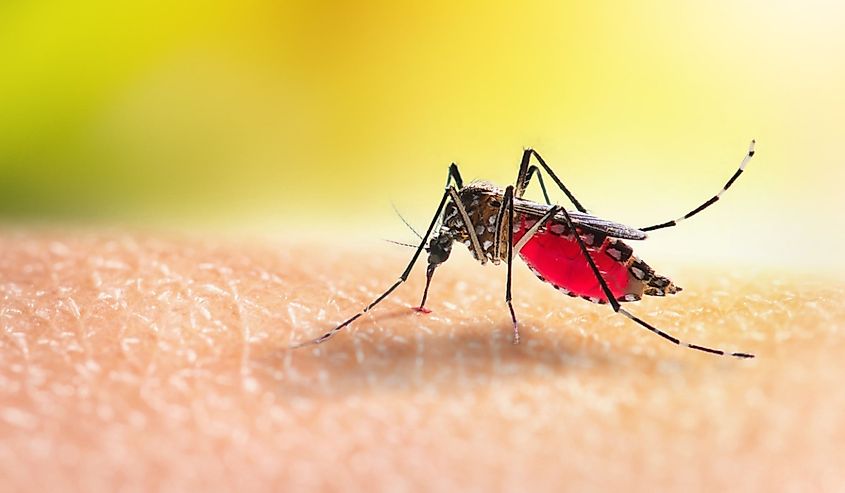
Mosquitoes may not seem like much more than a summer annoyance for most Connecticutians, but they are, in fact, the deadliest animal on earth. Mosquitos in Connecticut spread diseases such as West Nile Virus, Eastern Equine Encephalitis (EEE), and Zika virus. In 2023, four cases of dengue fever were diagnosed in the state of Connecticut. To avoid mosquitos, stay away from stagnant bodies of water, use bug spray, stay indoors around dawn and dusk, and wear long-sleeved clothing to minimize skin exposure.
3. Black Bears (Ursus americanus)
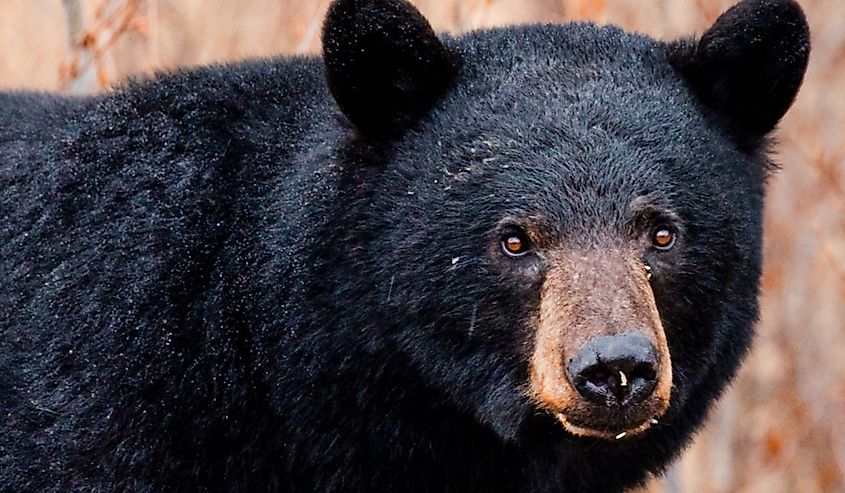
While Grizzly bears might get all the public attention, black bears can also prove deadly, albeit less frequently. Black bears wander the forests and suburbs of Connecticut, often wandering into more populated areas in search of food. While typically shy, bears will attack if provoked or if their cubs are in danger. If you encounter a bear on a hike, wave your arms and make noise to scare it away, and if you see bear cubs, go back the way you came to give their mother a wide berth. Secure any food or garbage in bear-proof containers, as bears often conflict with humans when food is scarce.
4. Eastern Copperhead (Agkistrodon contortrix)
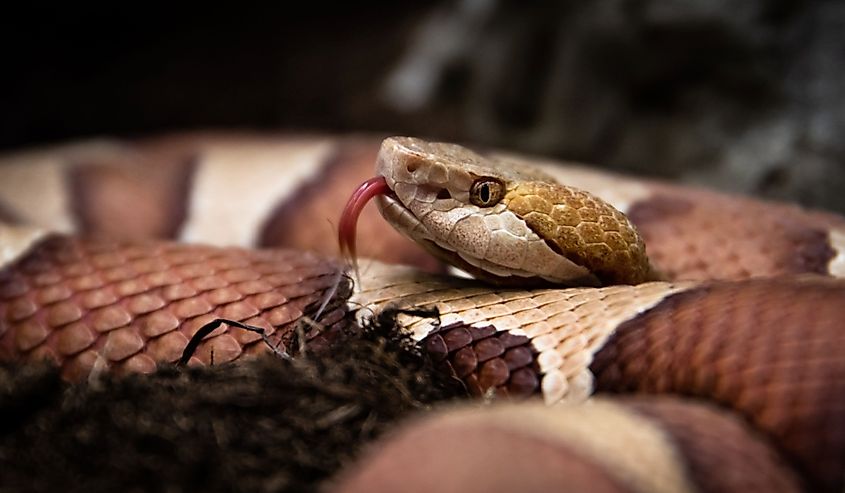
The Eastern copperhead is known for its distinctively colored head and hourglass-shaped bands on its body. A venomous snake, this copperhead's bites induce pain, swelling, and, for severe bites left untreated, tissue damage. While incidents of snake bites are very rare in Connecticut, be sure to seek medical treatment immediately if you are bitten. To avoid copperheads, stay observant on hikes, stay on the trail, and be aware that swampier areas will tend to be where the snake is found.
5. Timber Rattlesnake (Crotalus horridus)
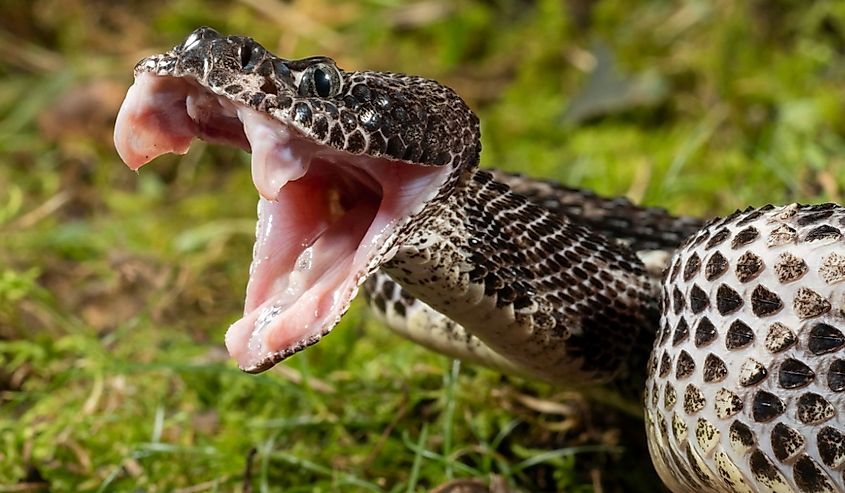
Did you know that Connecticut is home to rattlesnakes? While not the same variety found in the desert, timber rattlesnakes are large, venomous snakes with, you guessed it, a rattling tail. If bitten, expect severe pain, swelling, and larger body/organ issues if you don’t seek medical attention immediately (which you should). While this is a shy snake that typically inhabits rocky, remote areas of the Nutmeg State, it’s best again to stay on the trail while hiking, and if you hear the tell-tale rattle, go back the way you came. They’re trying to warn you for a reason!
6. Coyote (Canis latrans)
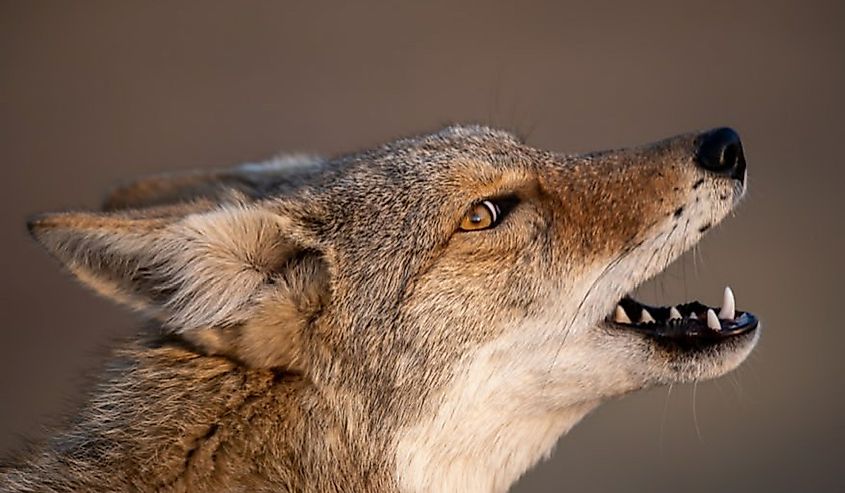
Wiley and increasingly frequenting Connecticut’s suburban communities for their ample trash and small pets, coyotes do roam free. Occasionally confused for actual dogs, coyotes are medium-sized, with a gray-brown coat and bushy tail. When food is scarce, they will scrounge through garbage as well as attack pets and even humans. Additionally, coyotes always carry the risk of rabies. Their teeth make them formidable foes, but you can scare them off easily. Make a lot of noise and keep a close eye on your pets and you should be fine.
7. Bobcats (Lynx rufus)
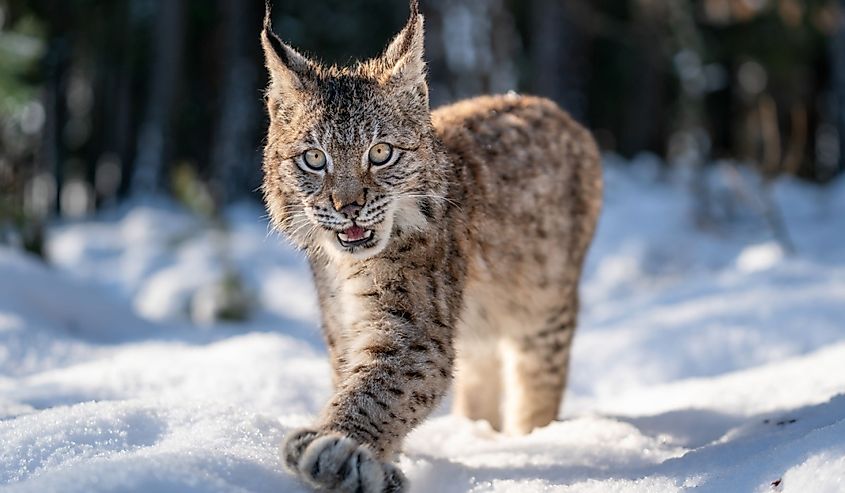
Bobcats are medium-sized wild cats, with males weighing anywhere from 14 to 40 pounds when fully grown. While bobcats rarely attack humans it is not uncommon for them to attack small mammals, thus, it is best to keep smaller pets under careful supervision when outside. Bobcats are unlikely to attack a larger animal like a human unless provoked but they can be protective particularly during mating and child-rearing season, If you do encounter a bobcats it is best to maintain as much distance as possible and back away from the animal. If the bobcat does show interest in you be sure to make yourself as large and intimidating as possible, making noise, throwing objects and spraying water towards the animal can all help to deter it from advancing on you.
8. Brown Recluse Spider (Loxosceles reclusa)
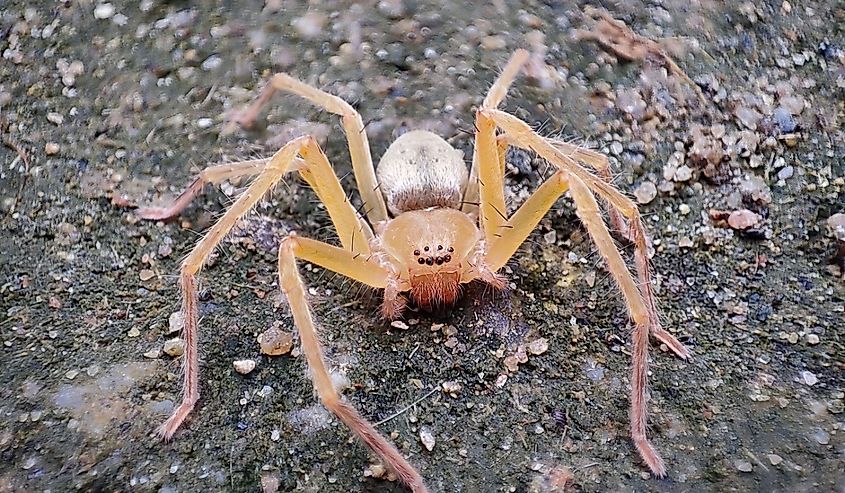
The brown recluse is an aptly named predator; however, luckily, it's about the size of a quarter, and its prey are even smaller. Living predominantly in dark, undisturbed areas, like basements, attics, sheds, woodpiles, and similar, they tend not to seek attention. Like all arachnids, recluses have exoskeletons and therefore are not prone to insult like mammals, who are much more thin-skinned. As such, they typically only bite when truly physically threatened. To avoid putting a brown recluse in this position, be sure to shake out any shoes or boots you might keep outside or other clothing that receives less frequent attention. Wear gloves when handling firewood or working in dark, often unperturbed areas. If bitten, seek medical attention as soon as possible. Though rarely fatal, a brown recluse bite can cause severe necrosis in and around the affected bite area, possibly leading to permanent skin and nerve damage.
9. Black Widow Spider (Latrodectus mactans)
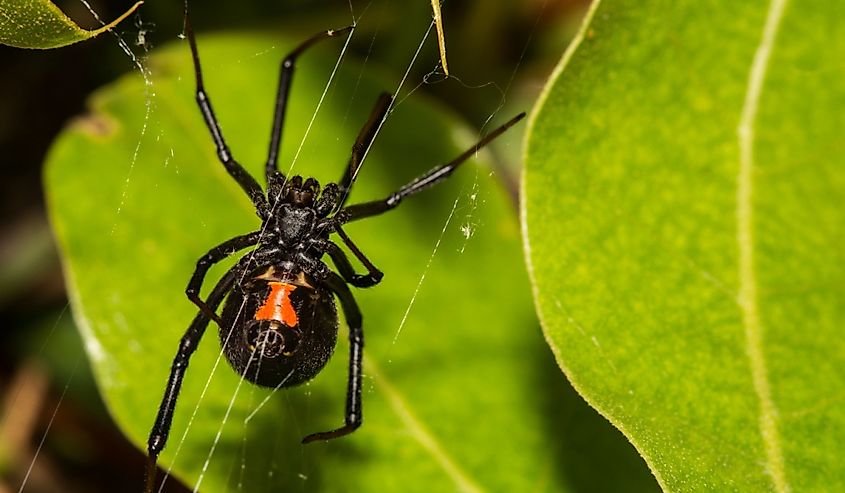
The black widow spider is one of the most recognizable creatures on our list, with the distinctive blood-red hourglass shape emblazoned on its abdomen, and yet it might be one of the hardest animals to see. Sharing many of the aforementioned brown recluse’s haunts, black widows prefer quiet areas with relatively little action: woodpiles, sheds, basements, attics, etc. Avoiding black widows follows many of the same basic guidelines as avoiding brown recluses, shaking out rarely worn clothes, and wearing gloves when handling wood or working in obscure locations. Black Widow bites can be extremely painful and, like brown recluse bites, can cause necrosis in the bite area. Seek medical attention as soon as possible to ensure you live to tell the tale!
10. Rabid Raccoons (Procyon lotor)
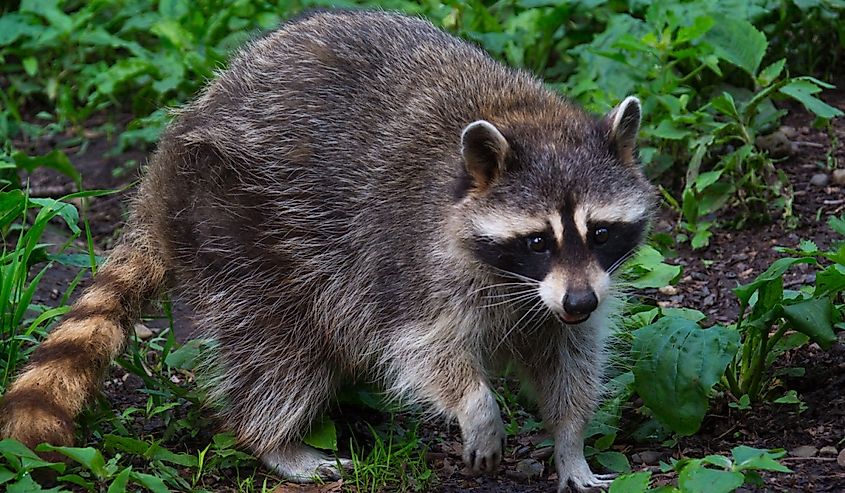
The only sure fire way to know if a raccoon is rabid is to get bitten by it and test positive for rabies, unfortunately by that point, the rabies survival rate is just about zero percent. Rabies often has tells, including daytime activity in nocturnal animals (like raccoons), frothing at the mouth, and unusual aggressiveness. Do not assume a lack of these symptoms means you are safe to handle a wild raccoon. Non-rabid raccoons are still wild animals that will behave erratically if threatened. They have sharp teeth and claws that can easily cause severe damage and often carry other bacteria that, if untreated, can be extremely dangerous and even deadly. Your best bet is to steer clear of any raccoons you see. Unfortunately, regardless of their disposition, these cute little trash pandas are not trying to be your friend. The best way to avoid run-ins with raccoons is to secure your trash, keep your yard clean, and fence your gardens. In the event of a raccoon bite or scratch, seek immediate attention. The survival rate among those who seek medical care for raccoon bites is near 100%; however, if you are bitten and wait until symptoms appear, your survival rate drops to nearly zero, so as you can tell, even in doubt, it is best to seek medical help as soon as possible.
11. Eastern Wolves (Canis lupus lycaon)
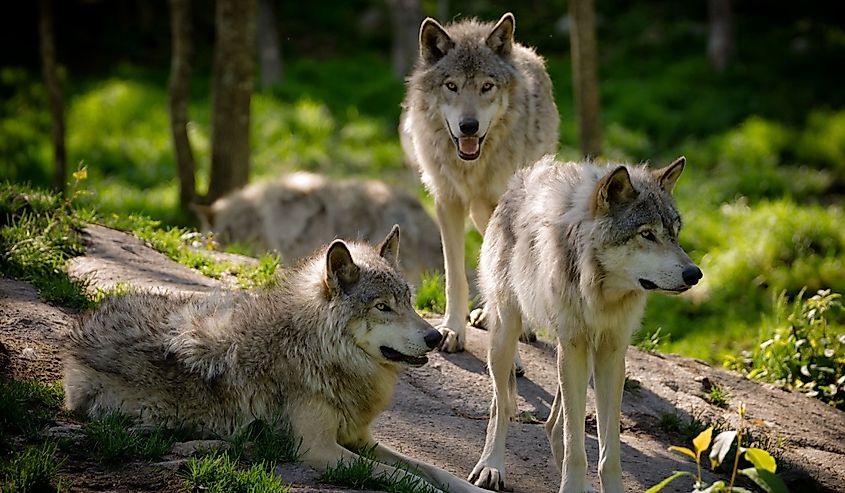
The Huskies have been the pride and joy of millions of Connecticut basketball fans. However, the husky’s undomesticated cousin is a different conversation. The eastern wolf is typically a medium/large-sized wolf. Usually, they are primarily grey, although they are also known to often have brown and tan patches mixed in and can even have entirely black coats. Wolves typically avoid heavily populated areas and are not particularly prone to random human encounters unless they feel that their young are being threatened. Eastern wolves can be a serious threat to livestock and small pets.
As farmland can often overlap with the grey wolf habitat, creating a nuisance for livestock farmers who typically use farm dogs as a deterrent and more deadly means if necessary. If you do happen to come across an eastern wolf while hiking or working your farm, animal experts recommend making a lot of noise and making yourself seem as large and intimidating as possible; this can include opening your jacket or finding a stump or something similar to stand on. Always face the wolf and do not run away, as wolves will often give chase in such a situation. Maintain your stature and slowly back away if the wolf does not do so first. In the event that the wolf does attack you, fight back using sticks or rocks, and if you can, climb a tree, as wolves are unable to do so. And, of course, seek medical attention as soon as possible.
12. White-Tailed deer (Odocoileus virginianus)
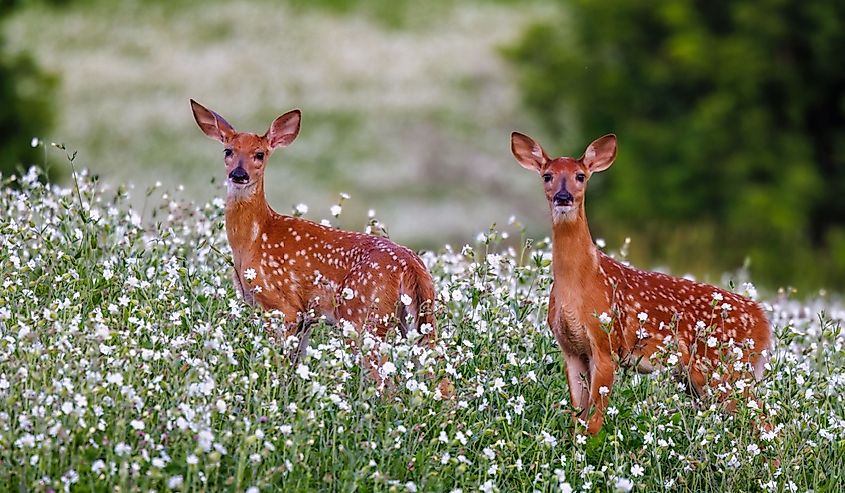
The white-tailed deer may not be a notoriously ferocious creature and millions of people world wide would agree that perhaps the most traumatizing deer they’ve encountered was Bambi or his mother, however a growing number of people might have a different answer if you asked them about Deer-related trauma. In the last three years, there have been 3,018 collisions with deer in CT alone, just a fraction of the estimated 2 million deer-vehicle collisions annually in the US. According to the Washington Post, there were 458 animal-related vehicular fatalities in the US in 2022, 440 of which were caused by deer. The majority of deer-involved car accidents happen between October and December. These months form the White-tailed deer’s mating season and are therefore its most active period.
As sunlight fades earlier and earlier through the season, it begins to encroach upon rush hour, making an increase in accidents practically inevitable. The white-tailed deer is estimated to be responsible for more deaths than any other large (non-human) animal in North America. It is always advisable, no matter where you are headed, to buckle your seatbelt, avoid distracted driving, follow the posted speed limit, stick to well-lit areas when possible, and be sure to pay particular mind to signs warning you of increased animal activity particular on high-speed roads surrounded by forest, like much of Merritt/Wilbur Cross Parkway (aka Route 15).
As you can see, while Connecticut is far from the wildest state in the U.S., it still has many deadly creatures that call it home. Many require vigilance and caution. Be careful, stay on the trail, and keep your eyes peeled; you should be fine. The Nutmeg State has many beautiful parks and recreational areas—common sense will keep you safe.





